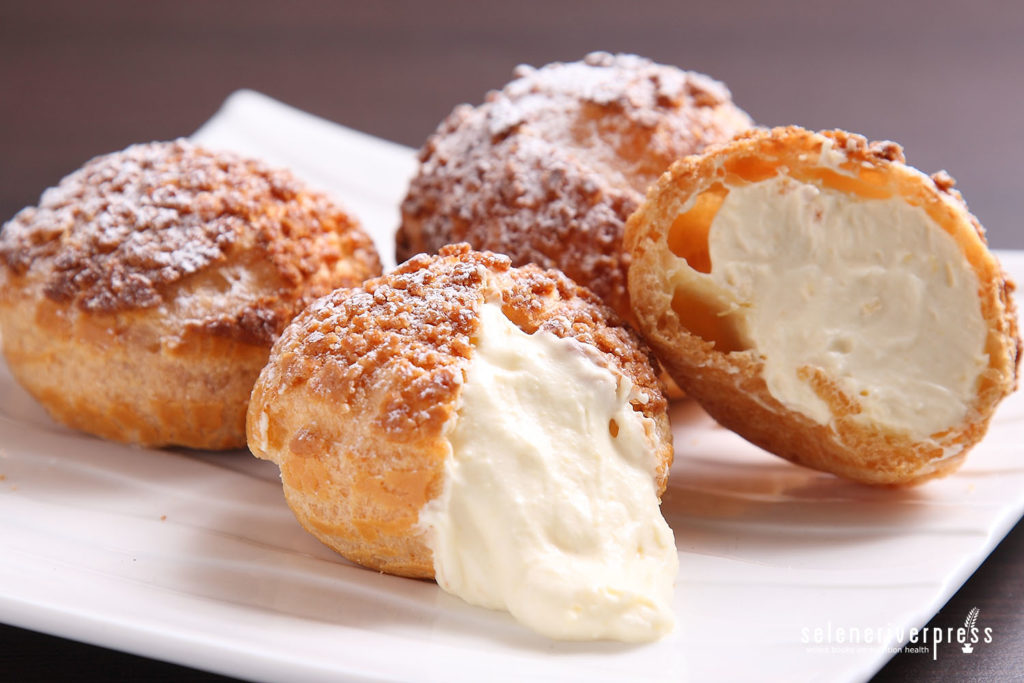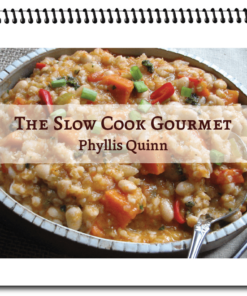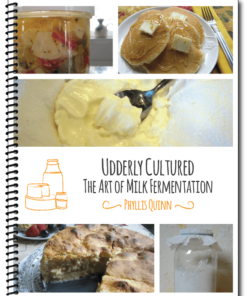Ask Chef Phyllis
I need a recipe for a good, no-fail pastry cream for the Napoleons and creampuffs that, after many attempts, I’ve finally mastered with rice flour substituted for the wheat flour. But the pastry cream also has to be gluten free and fool proof. Is this too big an order? I have a recipe with flour that works, but can pastry cream be made without it?
—Marianna Foster, Brooklyn, New York
Let’s call this Pastry Cream 101, since it’s not complicated. In fact, it’s downright easy—and you don’t need five eggs yolks and four eggs and a quart of heavy whipping cream to pull it off.
Custard filling for pastries goes by many names, but I simply call it…pastry cream. Indeed, it makes a delicious and simple pudding too. And you’re right, Marianna, most pastry cream recipes do contain flour or cornstarch to thicken them. But our recipe calls for arrowroot, which behaves differently than other thickeners. Please see the note about arrowroot below.
You mentioned that you mastered the creampuff pastry (pate choux) without the use of flour, and that’s outstanding. With practice, this divine pastry cream will become second nature too.
Pastry Cream (English, French, and Italian)
Italian patisseries use this custard in rum-soaked pastries and in “Sfogliatelle,” the famous shell-shaped cakes of Naples. French confectioners use it in Napoleons and creampuffs. And the English use it for a custard. But wherever you use this, it will be sensational!
A note about arrowroot: Unless you’re an experienced pastry chef, you may not know that arrowroot thickens upon cooling—just the opposite of flour or cornstarch. Keep this in mind as the mixture will not thicken on the stove as you are used to seeing. Arrowroot breaks down with excessive heat so should not be used in recipes that require long-term cooking in the oven.
Ingredients
2 cups whole milk
¼ cup heavy whipping cream
2 large eggs
4 teaspoons arrowroot (in place of the flour in the original recipe)
½ scant cup coconut sugar (I used ⅓ cup monk fruit sweetener)
3 tablespoons butter
1 tablespoon vanilla
1 drop orange blossom water (optional, but worth using)
Instructions
- Pour milk and cream in a heavy-bottomed saucepan. Add eggs, making sure to break the yolks and whisk them in. Combine arrowroot and sugar in a small bowl, then add to saucepan. Stir well.
- Turn heat to low and cook gently for about 3 minutes, then turn heat to medium while stirring constantly. The mixture will thicken slightly. (Coating the back of a spoon is desirable, and it will continue to thicken when refrigerated.)
- Turn heat off, then add butter, vanilla, and orange blossom water. Pour cream into a lidded glass dish. Let cool, uncovered, so steam will not dilute the custard, before placing the lid on the dish.
Chef’s note: If you wish to turn this custard into Chantilly cream, it’s easy. When the custard is cold, add ½ cup chilled heavy cream, mixed with just a dash of good vanilla, before it’s been whipped to stiff peaks. Refrigerate until serving time. I like to serve it with fresh fruit in season and loads of berries—delightfully light and refreshing. Life’s pleasures seem to be epitomized in a dessert so elegant in its simplicity.
Image from iStock/linyuwei.





